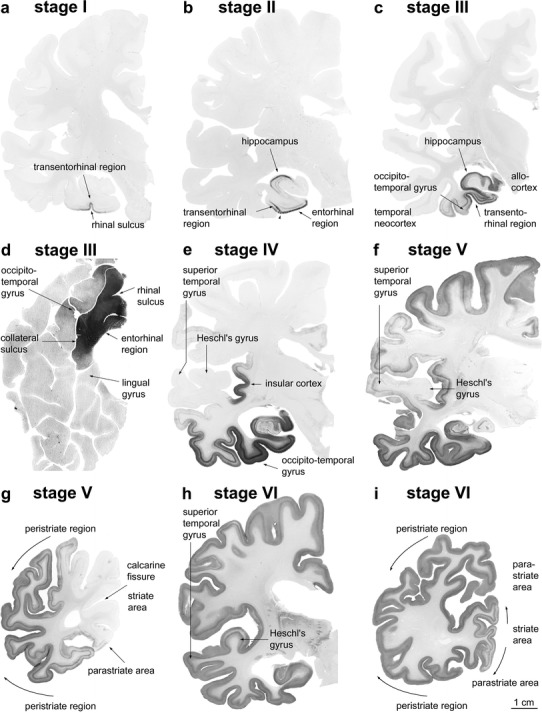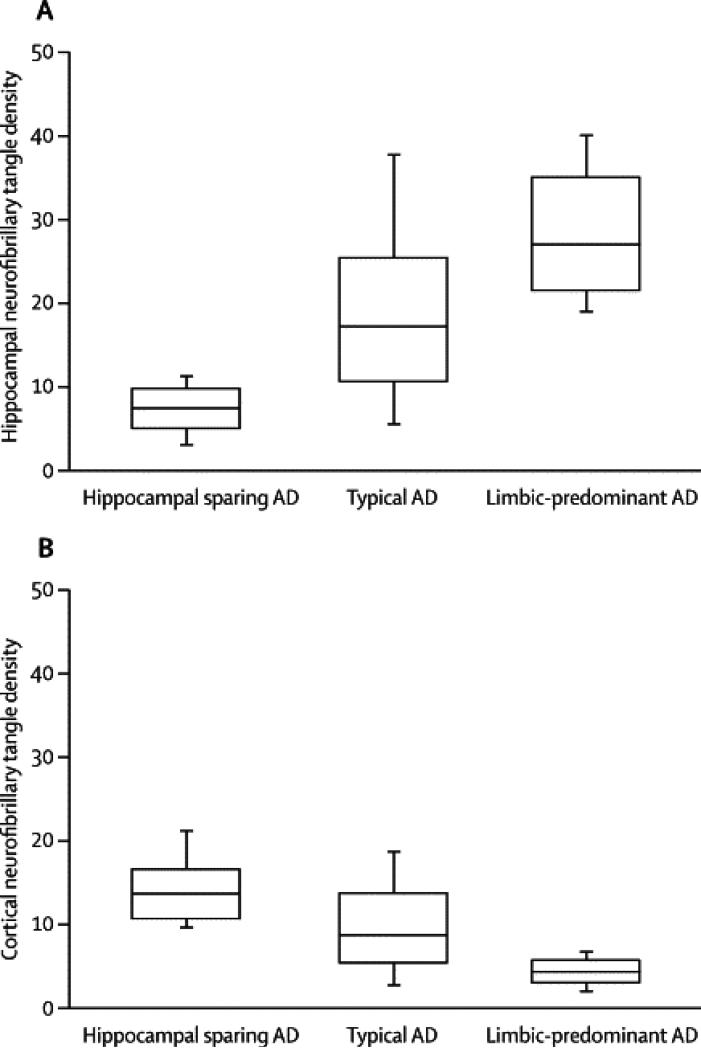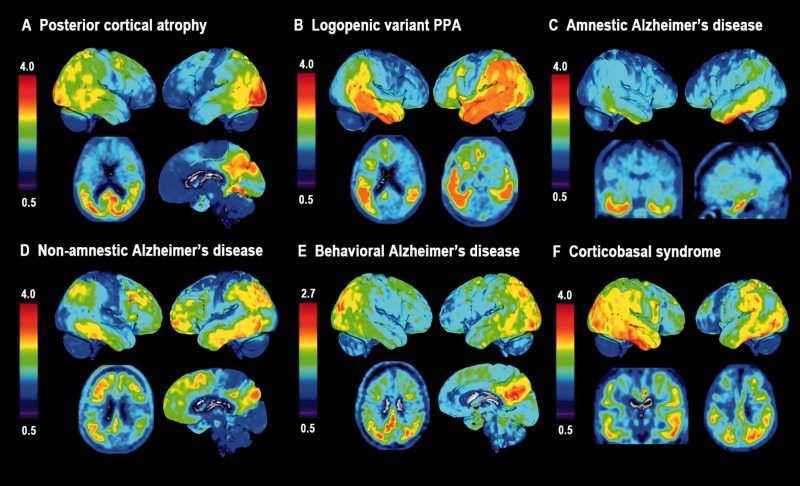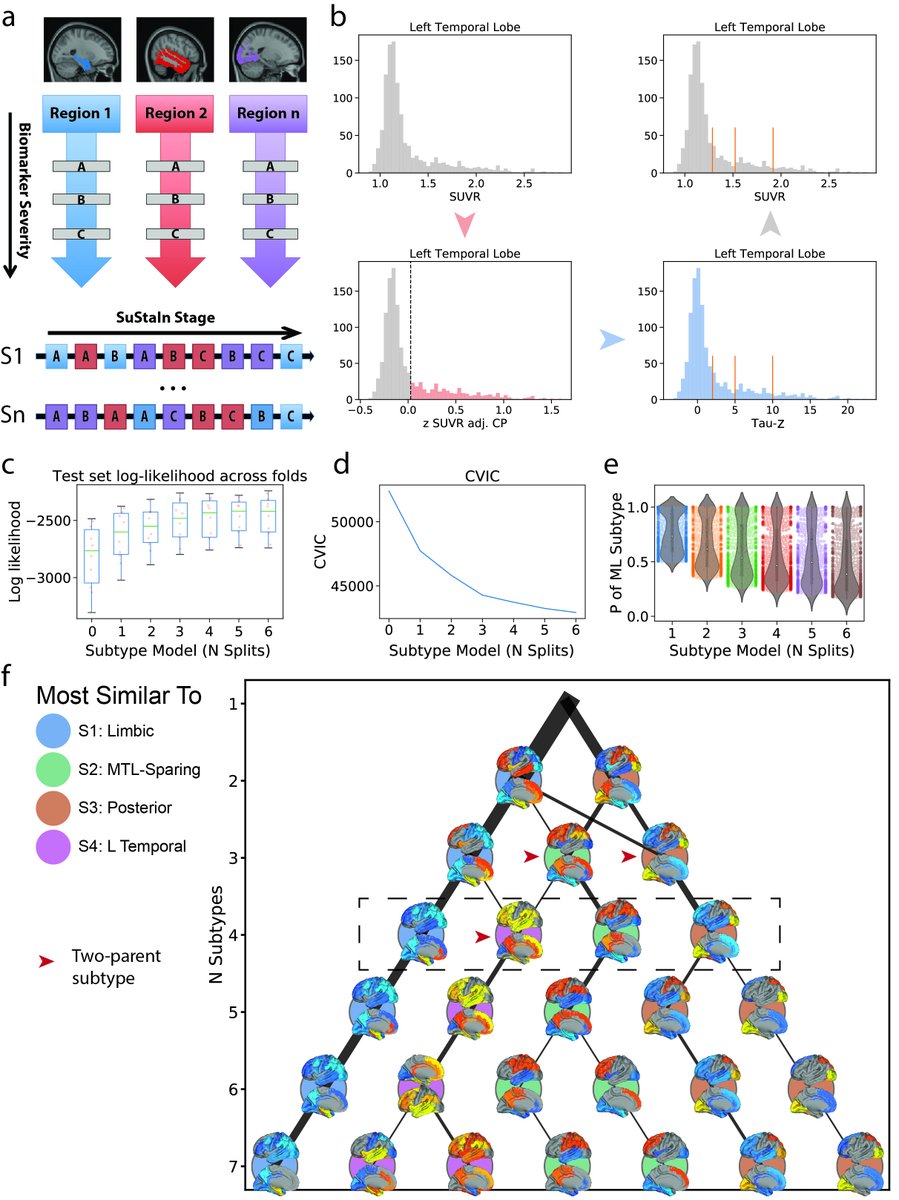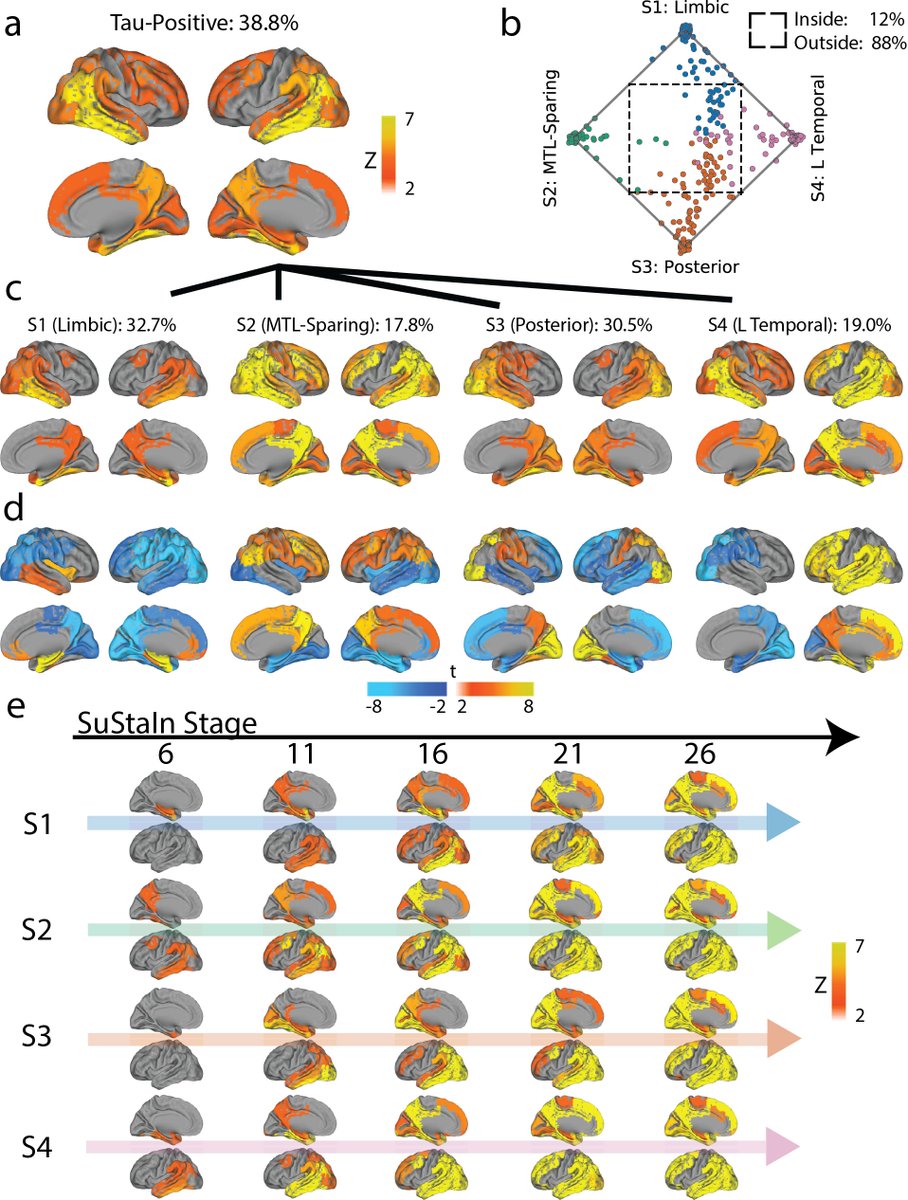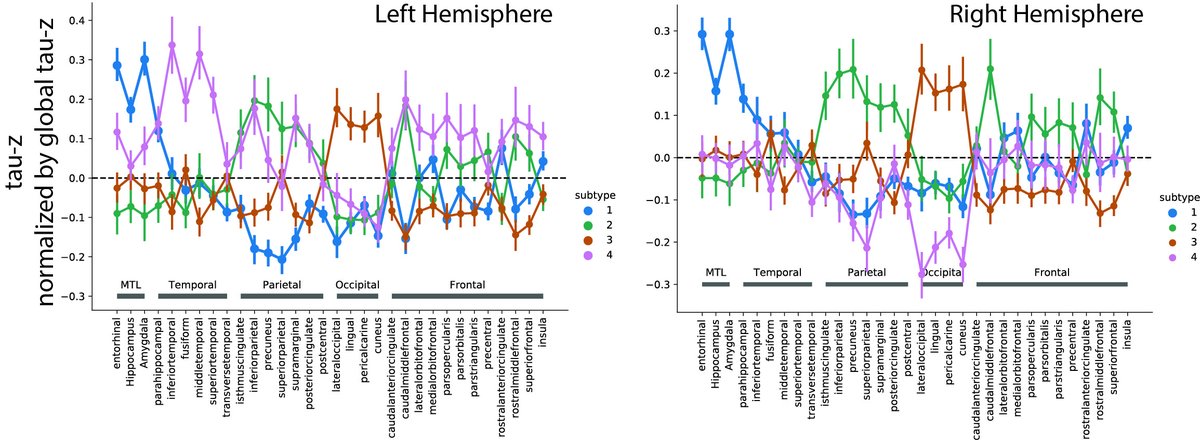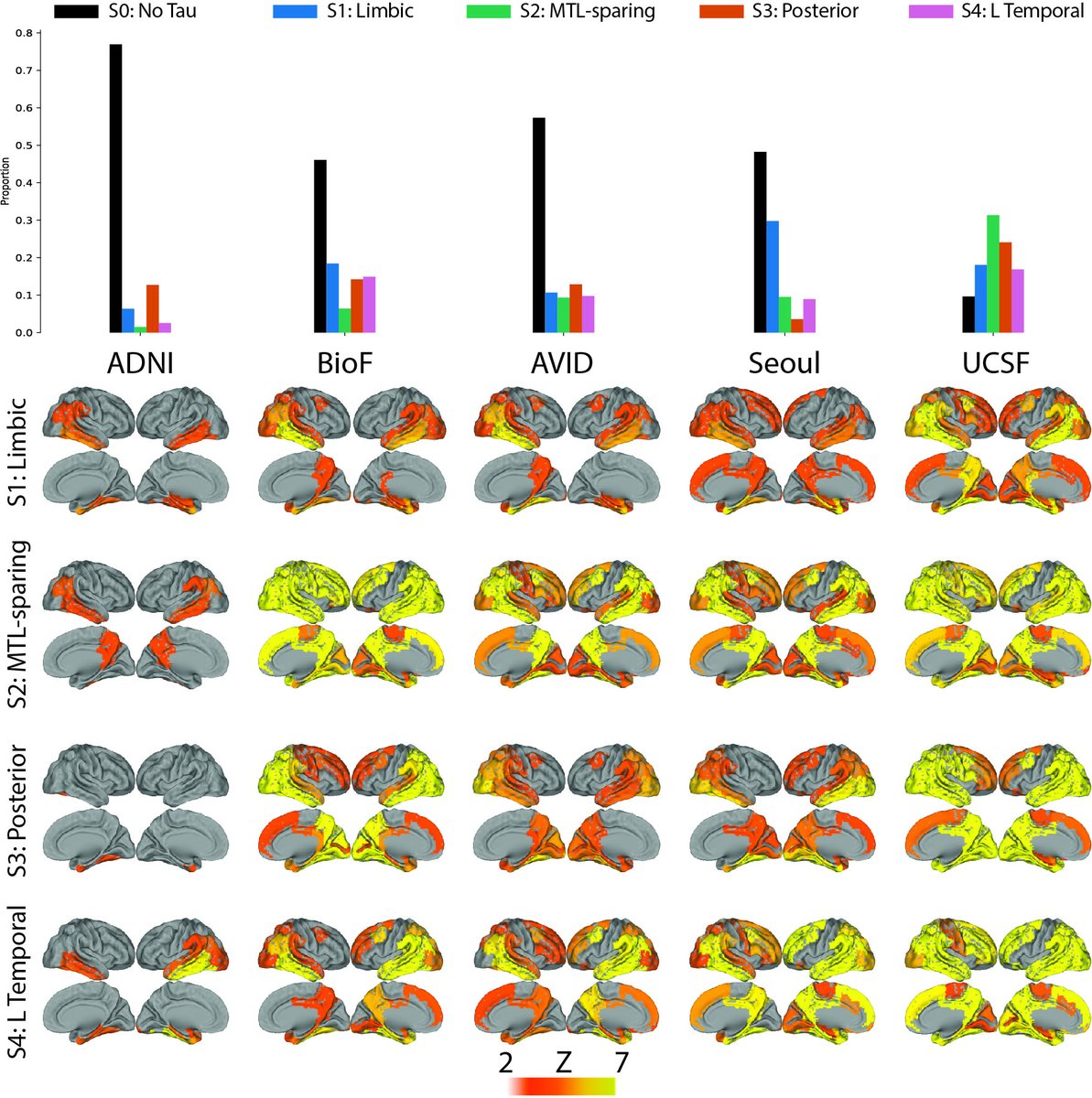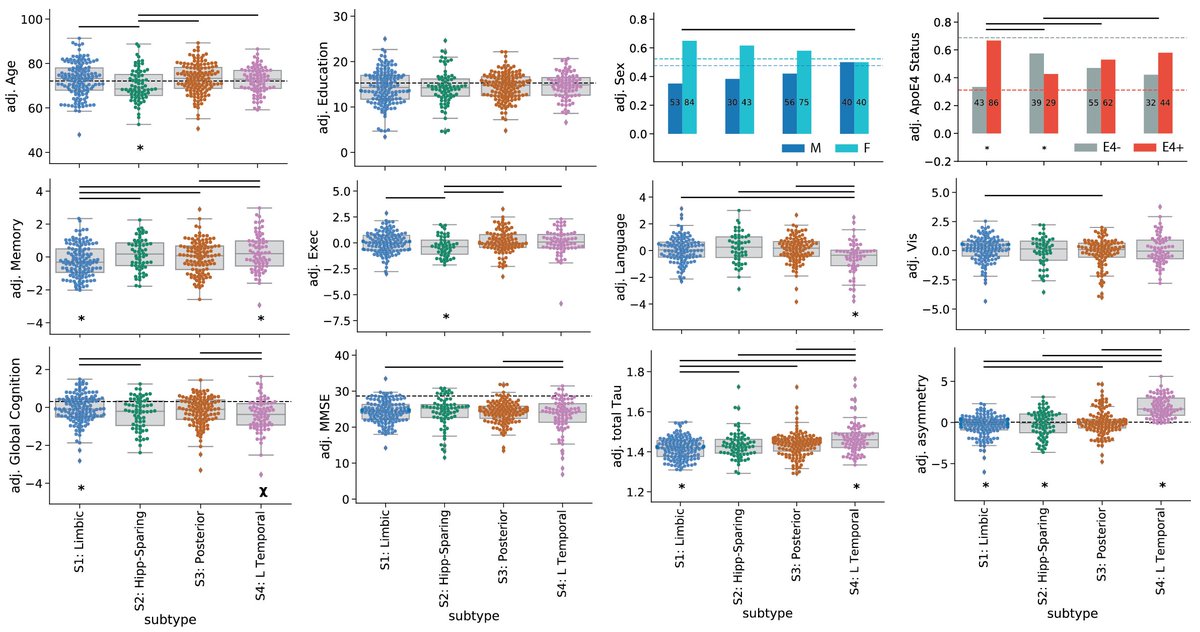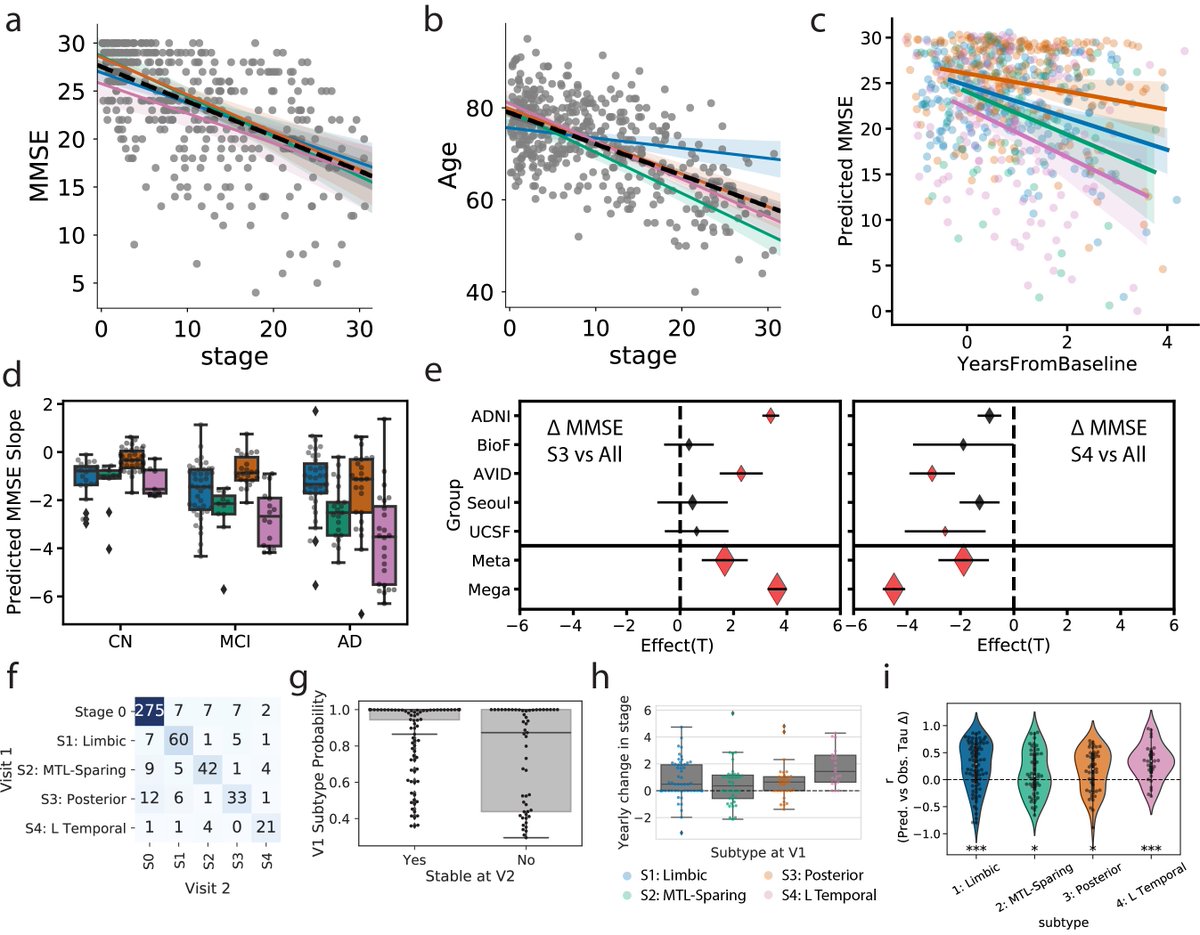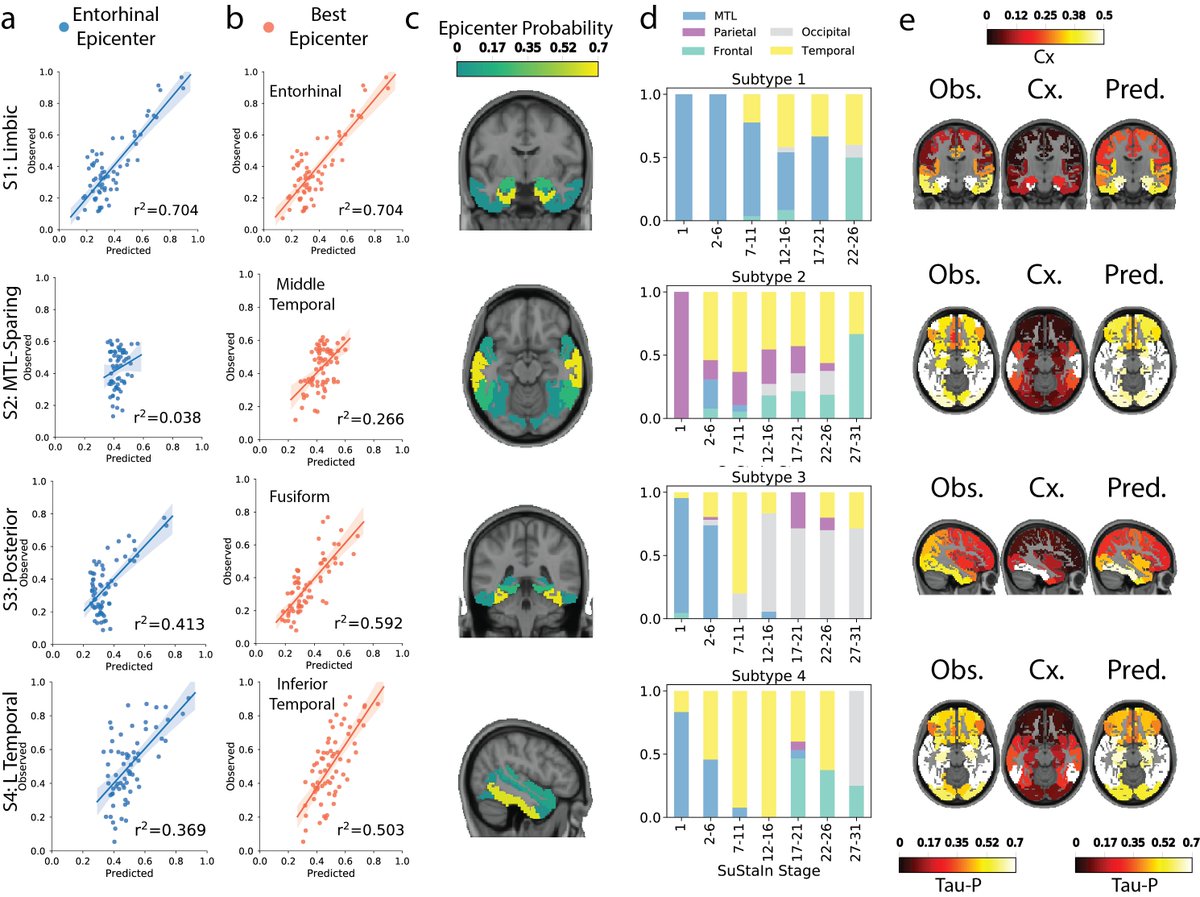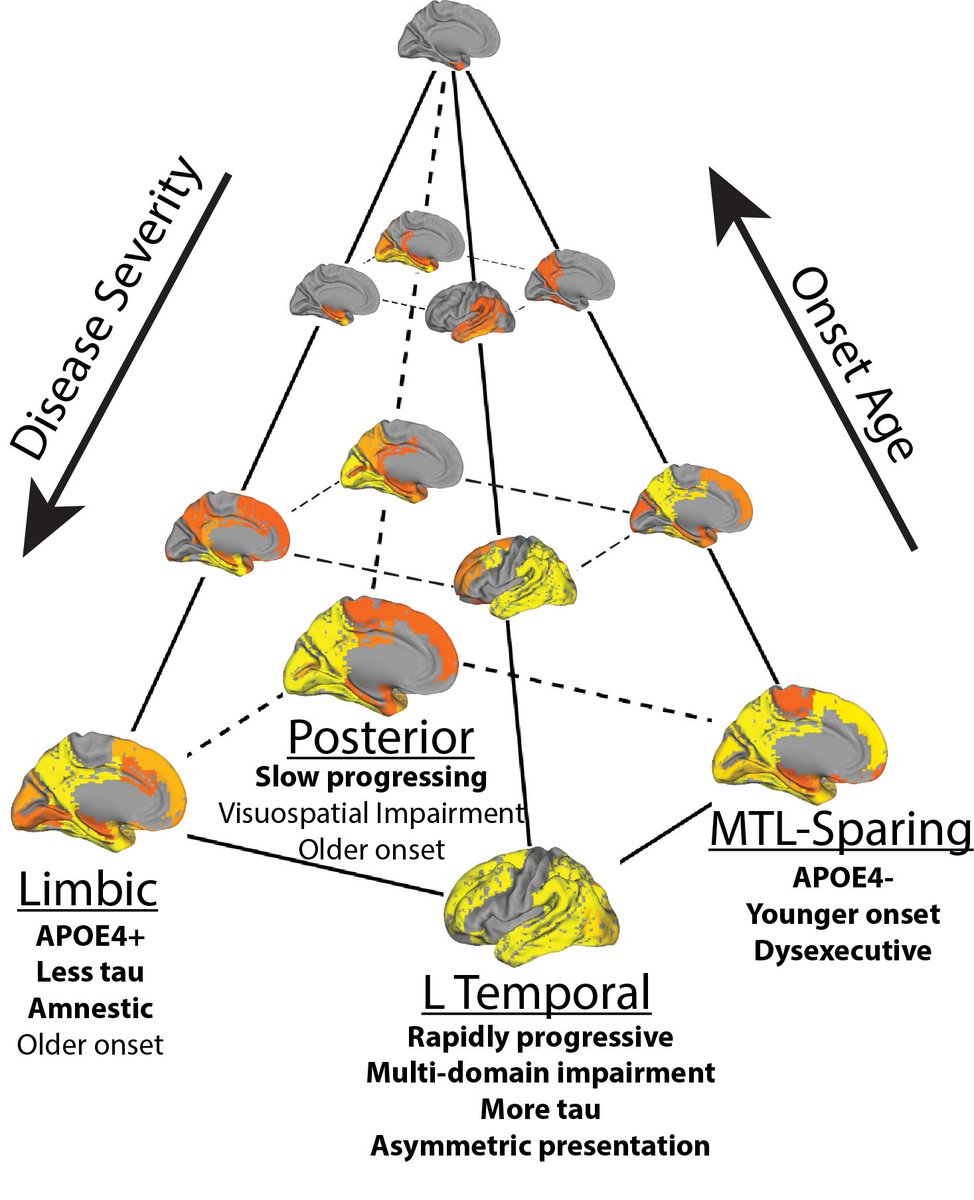Does Alzheimer’s disease pathology spread through the brain consistently across the population? We delve into this in our paper “Four distinct trajectories of tau deposition identified in Alzheimer’s disease”, now online at Nature Medicine. #Sec23">https://www.nature.com/articles/s41591-021-01309-6 #Sec23">https://www.nature.com/articles/... Thread below 1/
Tau is one of the two pathologies that characterize Alzheimer’s disease (AD). Autopsy work suggests it spreads in a specific and highly compelling pattern, formalized into the Break staging system and used to stage tau pathology in AD. See https://tinyurl.com/braak2006 .">https://tinyurl.com/braak2006... 2/
@DrNeuroChic showed limbic-predominant and hippocampal-sparing patterns that deviated from the Break progression were not uncommon https://tinyurl.com/msts2011 .">https://tinyurl.com/msts2011&... @RikOssenkoppele showed that clinical variants of AD also have deviant patterns https://tinyurl.com/rik2016 .">https://tinyurl.com/rik2016&q... What gives? 3/
Parsing AD heterogeneity in an unbiased manner has been challenging because overall severity is the greatest source of spatial variance. Alex Young created the SuStaIn algorithm https://tinyurl.com/yngsus2018 ,">https://tinyurl.com/yngsus201... which handles both pseudotemporal and spatial aspects of variation 4/
But this requires pretty large sample sizes. So, we got together with researchers at the @UCSFmac, @biofinder_study in Sweden, Gagnam Severance in Korea, AVID radiopharmaceuticals, + ADNI data to come up with over 1600 tau-PET scans. 1143 were used for analysis. 5/
Applying SuStaIn to this dataset, we found four distinct spatiotemporal patterns, including limbic-predominant and MTL-sparing variants similar to those described by @DrNeuroChic, as well as posterior and lateral temporal subtypes resembling the clinical variants, PCA & lvPPA 6/
Each subtype was found in each of the five cohorts we studied. We then applied SuStaIn separately on another cohort, BioFINDER II, which used a totally different tau-PET radiotracer. Performing the analysis from scratch in this group, we found highly similar subtypes. 7/
The 4 subtypes differed in their clinical presentation, including in terms of age, likelihood of APOE4 allele carriage, and cognitive profiles. We found the posterior subtype to exhibit a slower rate of global decline, while the lateral temporal variant progressed faster. 8/
Using network diffusion methods from our previous paper https://tinyurl.com/vogel2020 ,">https://tinyurl.com/vogel2020... we found the tau-PET patterns of each of the 4 subtypes resembled a different temporal lobe network. Simulating diffusion through that network could recapitulate the subtype patterns observed. 9/
In all, we conclude that there may not be such an entity as “typical AD”, but rather that individuals with AD present with one of at least four different subtypes with distinct prognoses. In addition, younger age is associated with more severe subtype expression. /10
This latter point means clinical variants may just be extreme presentations of normally occurring AD subtypes. This idea is supported by recent work by @Colin__Groot from @RikOssenkoppele lab -- see Figure 4 of https://tinyurl.com/groot2021 ">https://tinyurl.com/groot2021... 11/
We are interested to see our findings validated by pathologists, and we would like to better characterize these subtypes. Will they respond differently to treatment? What does it mean about disease biology? Much work to be done. 12/
We also had to cut a lot of words to fit the journal’s requirements, but see the original preprint for a much more in-depth discussion. https://www.medrxiv.org/content/10.1101/2020.08.20.20176883v1">https://www.medrxiv.org/content/1... /13
This was an amazing collaboration by the research centers described above, plus us at @TheNeuro_MNI and the methodologists at UCL. Big thanks to Alex, @NeilOxtoby, @relajoie, @RikOssenkoppele, @OskarHansson9, @MedinYasser and many amazing of non-tweeps! /end

 Read on Twitter
Read on Twitter